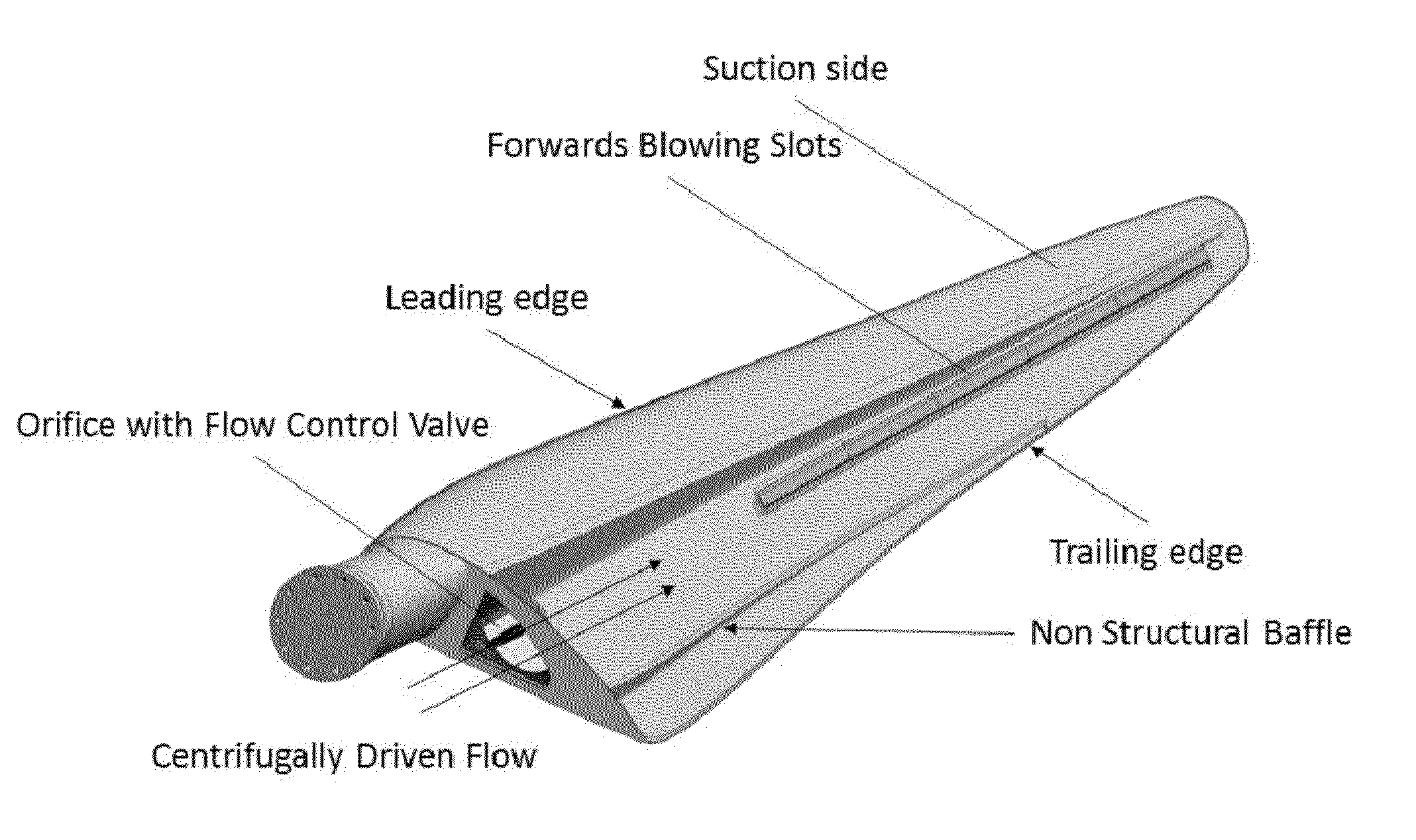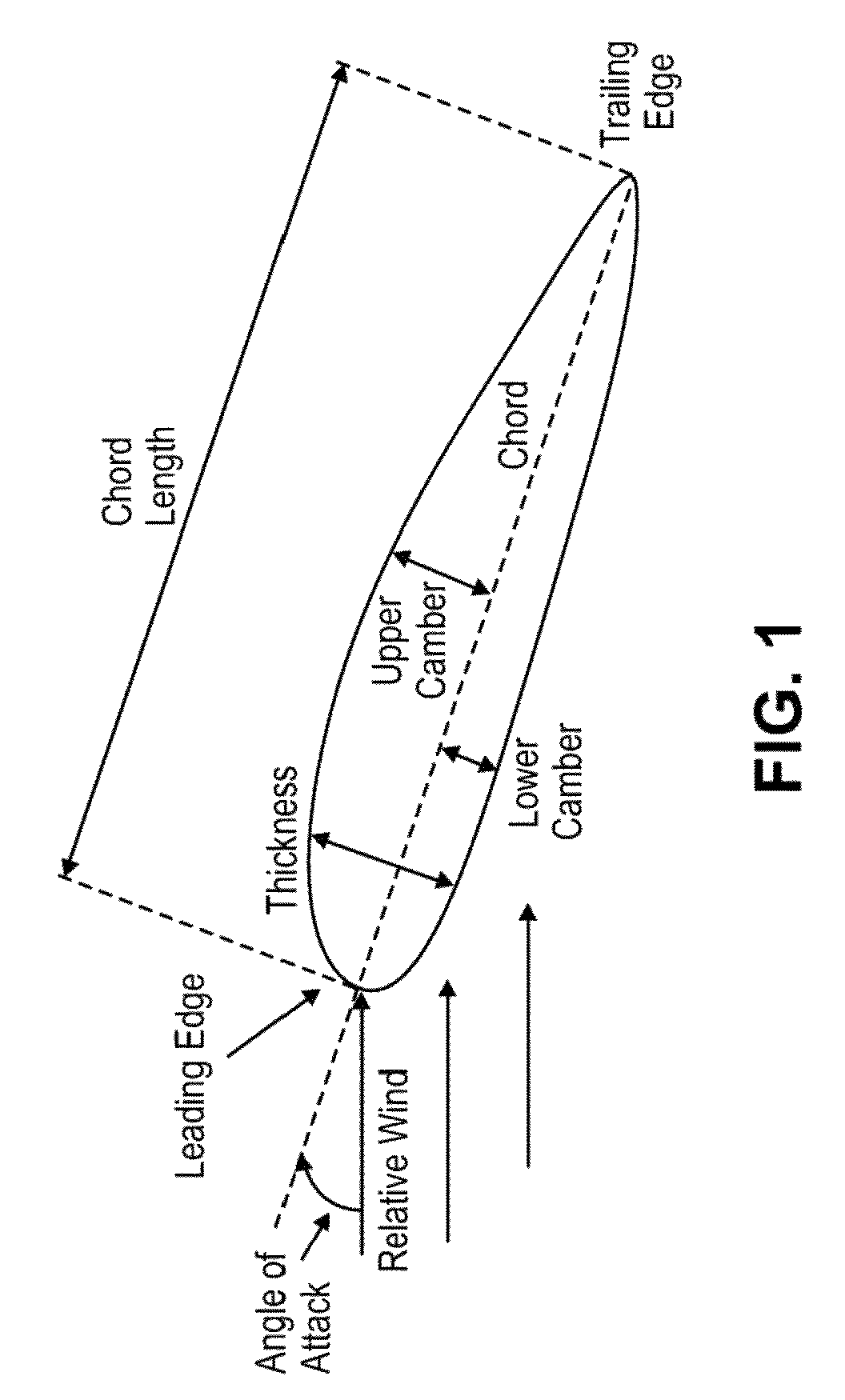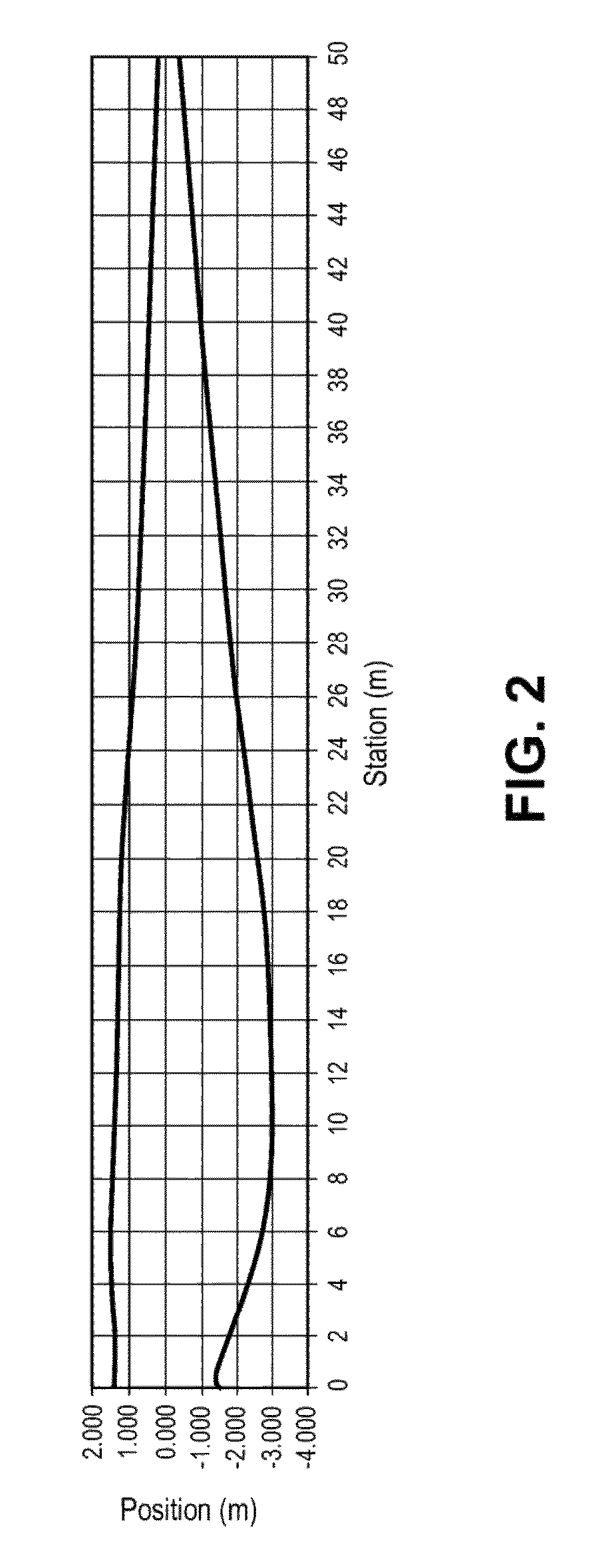Turbine blades and systems with forward blowing slots
a technology of turbine blades and slots, which is applied in the direction of machines/engines, mechanical equipment, transportation and packaging, etc., can solve the problems of increasing the cost of manufacturing such blades, reducing the efficiency of wind turbines, and increasing the complexity of current wind turbines. , to achieve the effect of reducing the amount of resources required, improving the output of wind turbines, and being more efficien
- Summary
- Abstract
- Description
- Claims
- Application Information
AI Technical Summary
Benefits of technology
Problems solved by technology
Method used
Image
Examples
example 1
[0233]FIG. 15 shows an example of the level of power generation control that can be achieved with forwards blowing slots. The plot shows the baseline blade power generation and the power generation for the blade with operating forwards blowing slots located at the mid chord position of the airfoil from about 55% to 90% span of the wind turbine blade. Two blowing conditions are shown, one with centrifugally powered blowing alone and one with the air to the forwards blowing slot provided by a combination of an auxiliary blowing system (e.g., 6 kilowatt power consumption) in combination with the centrifugally powered component. It can be seen that significant control (i.e., power reduction) can be achieved with centrifugally driven forwards blowing slots and that the addition of an auxiliary blower can be used to extend the level of power reduction. In some cases, with the use of the forwards blowing slots (and air or other gas provided by the slots) the turbine has no need for pitch u...
example 2
[0234]A valve implementation for use in a wind turbine forward blowing slot uses a 0.020″ silicone flap mounted to an aluminum frame with room temperature vulcanization (RTV) silicone adhesive and spring steel retaining strips (FIG. 19). The valve card is retained in the slot insert using a channel through the trailing edges of the turning vanes and into the lower surface of the insert. Installation of the upper surface fully retains the valve card, as, can be seen in FIG. 18.
[0235]Systems and methods provided herein are combinable with, or modifiable by, other systems and methods, such as, for example, systems and / or methods described in U.S. Pat. No. 6,940,185 to Andersen et al. (“ADVANCED AERODYNAMIC CONTROL SYSTEM FOR A HIGH OUTPUT WIND TURBINE”); U.S. Patent Publication No. 2010 / 0143122 to Nies et al. (“ACTIVE FLOW CONTROL SYSTEM FOR WIND TURBINE”); U.S. Pat. No. 5,106,265 to A. Holzem (“WIND-TURBINE WING WITH A PNEUMATICALLY ACTIVATED SPOILER”); U.S. Pat. No. 4,197,053 to E. R...
PUM
 Login to View More
Login to View More Abstract
Description
Claims
Application Information
 Login to View More
Login to View More - R&D
- Intellectual Property
- Life Sciences
- Materials
- Tech Scout
- Unparalleled Data Quality
- Higher Quality Content
- 60% Fewer Hallucinations
Browse by: Latest US Patents, China's latest patents, Technical Efficacy Thesaurus, Application Domain, Technology Topic, Popular Technical Reports.
© 2025 PatSnap. All rights reserved.Legal|Privacy policy|Modern Slavery Act Transparency Statement|Sitemap|About US| Contact US: help@patsnap.com



